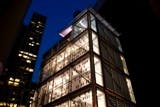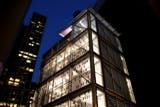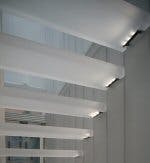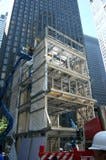Home Delivery is a two-part exhibition on the historical and contemporary significance of factory-produced architecture. It includes five full-scale houses, one of which is Cellophane House, in the outdoor space west of the Museum. Designed by KieranTimberlake Associates, this house features a translucent architectural envelope that collects solar energy through integrated photovoltaic panels, and demonstrates the use of embedded light as an element of architecture itself.
The structure's entire LED lighting installation consumes just 1.3 W of energy per square foot, compared with the average house of about 1.7 to 2.3 W per square foot, including plug loads for the average house.
Unique applications of Philips' LED lighting at Cellophane House include using the eW Cove Powercore to uplight the translucent floors and to make a staircase glow. Also, eW MR lamps were used in place of conventional sources commonly used for recessed downlighting and ColorBlast® 12 uplit the roof deck canopy to bring dynamic color and a visual counterpoint to the house.
“In a typical house, all wiring and mechanical systems are hidden behind dry wall - an impossibility in a house made of transparent and translucent materials. Because LED systems are compact and free of heat emission, they can be concealed in tight spaces where conventional lights are impractical,” Stacy said.








